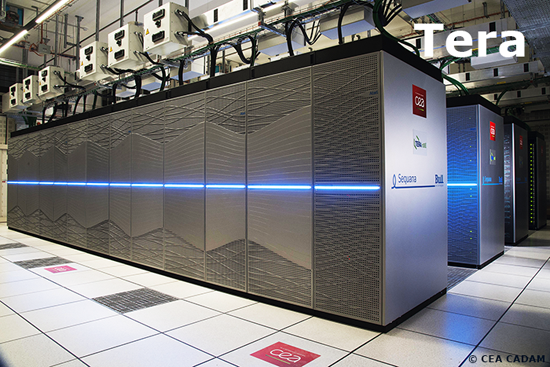TERA
As part of its Simulation programme, the CEA’s Military Applications Department (DAM) defined the Tera project to procure the necessary simulation systems to enable nuclear weapons to be designed and guaranteed without performing real-life tests.
The first stage, Tera-1, culminated in the installation, in late 2001, of a 5-teraflop supercomputer built and supplied by HP.
The second stage, Tera-10, saw the installation of a 60-teraflop supercomputer supplied by the manufacturer Bull, in late 2005. The defence computing centre’s infrastructures were adapted and the data storage and archival systems, networks and visualisation tools were also completely overhauled during this stage.
With the third stage of the programme, Tera-100, the CEA/DAM has had access to processing capacity in excess of 1 petaflop since October 2010. Tera 100 was Europe’s first petascale supercomputer, capable of processing more than a million billion operations per second.
Tera1000 is the fourth stage, initiated in late 2015, clearing the first technological obstacles to exaflop performance (i.e. 1 billion billion operations per second). Tera1000 is being commissioned in phases, delivering 25-Pflop processing power in 2017 - a 20-fold increase over Tera100 with equivalent electric power consumption. It is a forerunner to the Exa1 exascale computer, which is scheduled to begin operating by 2020, once again to serve the requirements of the Simulation programme.

Tera 1000-2.2 supercomputer, Bruyères-le-Châtel. © CEA
The Tera computing centre hosts computers, “big data”, broadband communication systems and post-processing and visualisation systems. While operating these resources, constant efforts are made to enhance energy efficiency and minimise environmental impacts.
1 Teraflop = one thousand billion operations per second
1 Petaflop = one million billion operations per second
